- Books Name
- Class-8 Science Book
- Publication
- PathSet Publications
- Course
- CBSE Class 8
- Subject
- Science
Transfer of Charges
TRANSFER OF CHARGE AND EARTHING
Charges can transfer from one object to another with the help of conduction and induction:
- Conduction: when a charged object comes in contact with a conductor it results in the transfer of charges through the conductor.
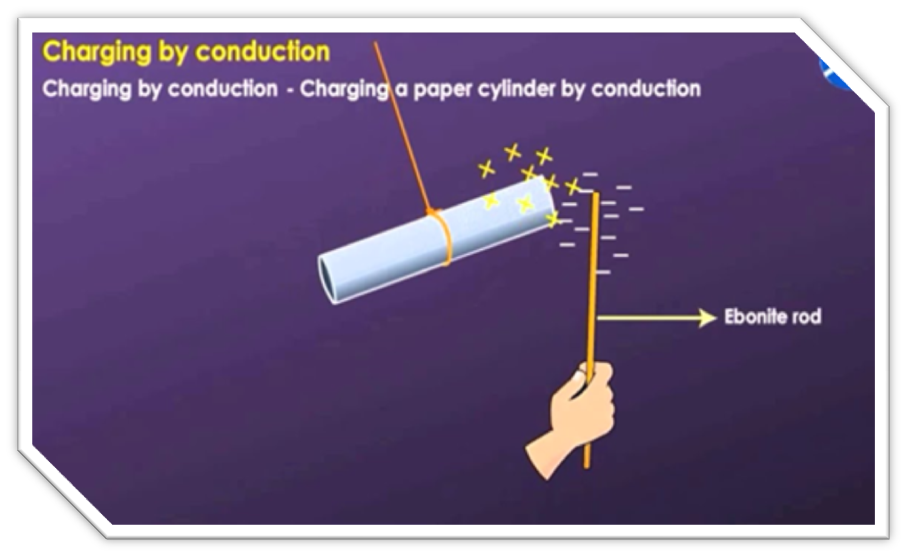
- Induction: When a charged object is brought near a neutral object, it results in shifting in the position of the electrons in the other object.
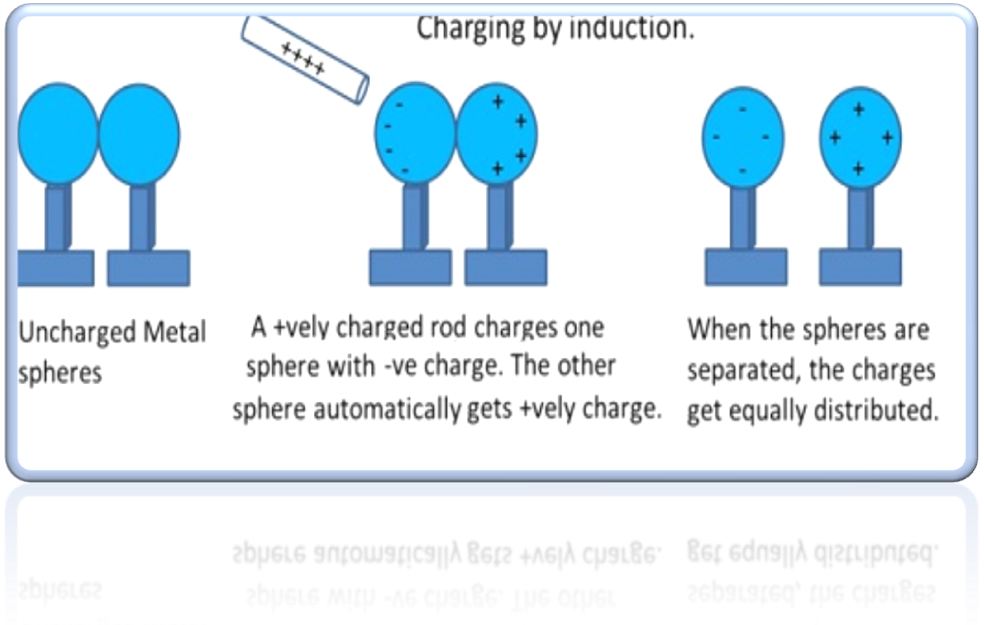
The process of induction does not involve any physical contact between the charged and uncharged object while the process of conduction requires physical contact between them.
How the transfer of Electric Charges leads to conservation of charge?
The net charge on a neutral object is zero. However, when an object receives some electrons from another object, the net negative charge on the first object is equal to the net positive charge of the second object. In this way, charges are conserved during the transfer of charges.
EARTHING
• The process of transferring charge from a charged object to the earth is called earthing.
• Earthing is provided in buildings to protect us from electrical shocks due to any leakage of electrical current.
• Electrical charge can be transferred from a charged object to another through a metal conductor. When we touch the end of the paper clip gently with our hands, we will find that the foil strips of the electroscope come back to their original state.
What is an Electroscope?
It is a device that can test if an object is charged or not. Abraham Bennet developed a gold leaf electroscope in 1787.
Structure of an Electroscope
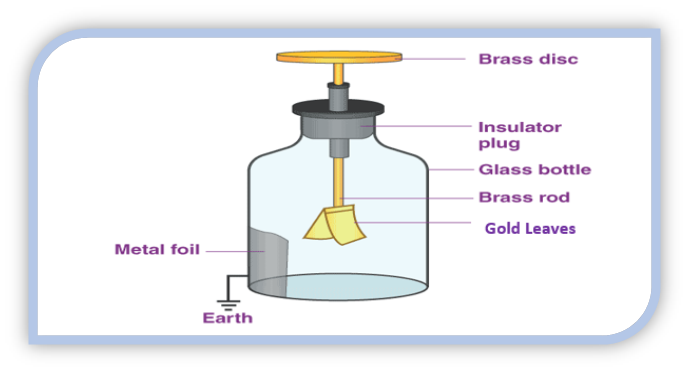
- Generally, gold and silver are used to construct an electroscope because they are good conductors of electricity. Otherwise, copper and aluminum can also be used.
- It consists of a glass jar having a vertical brass rod.
- The rod is inserted into the jar through the cork.
- The brass rod has a brass disc or horizontal rod attached to it.
- From the other end, two leaves of gold are suspended.
Working of an Electroscope
When a charged object touches the brass disc, electric charges get transferred from the brass rod to the gold leaves. As a result, the gold leaves move away from each other depicting the presence of charges.
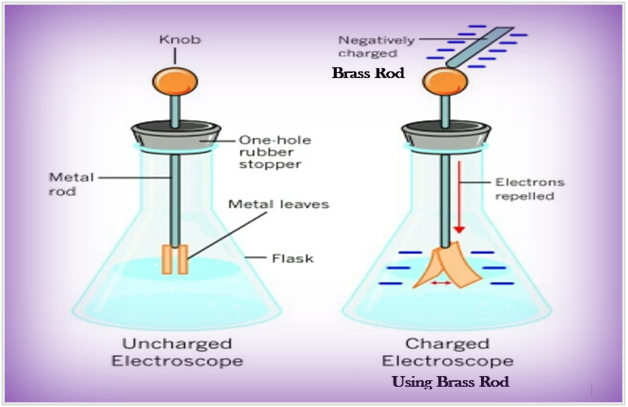
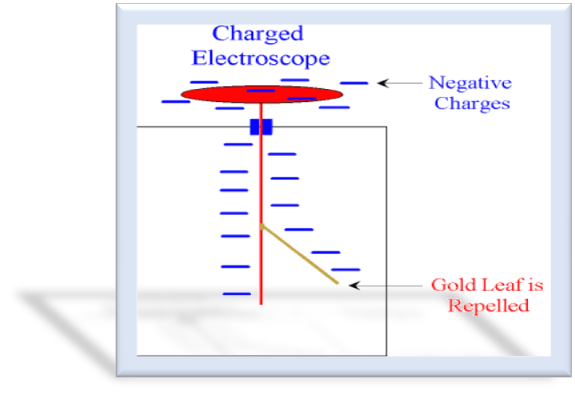
Discharging and Earthing
- When a charged object loses its charges it is said to be discharged.
- When a charged object transfers its charges to the earth it is called earthing. Generally, every building is provided with earthing to protect it from electrical shocks due to leakage of electric current.
Lightning Conductor
Lightning Conductor is a device used to protect buildings from the effect of lightning.
A metallic rod, taller than the building, is installed in the walls of the building during its construction.
One end of the rod is kept out in the air and the other is buried deep in the ground. The rod provides an easy route for the transfer of electric charge to the ground.

 PathSet Publications
PathSet Publications
